The Naitto sisters on the Ringling lot
Sverre Braathen photo / Used with permission of Illinois State University, Milner Library, Special Collections.
She is quoted extensively through serious circles. She is, it seems, surely the go-to authority for scholarly circus meets at which probing papers by probing minds are presented. She is touted as a modern-day expert on circus history and its reflection of changing American culture.
She holds a Ph.D in history. Most tellingly, she teaches Womens Gender Studies at the formidable University of Texas. Keep this in mind as we proceed through a minefield of mental gyrations (in less polite quarters, a more apt term consists of two words each beginning with "M"). Do I have your attention? Are you still with me? Today's feminists, I have observed if you will grant, operate as if called on high to root out every last trace of sexism behind every door, under every bed sheet — even in the rings of “misogynist” (their accusation) circus history. A seductively attired female serving as prop assistant for a male star — look, over there, see, while the man juggles! What does she do? Nothing! Gotcha!
Never mind abundant evidence to the contrary, a few examples herein illustrated. But feminism, not the primary concern here, is but the starting point into a search for other forms of discrimination, ethnic minorities being the leading contender.
She, our visiting professor for the day, is of course none other than the critically hailed Janet Davis. I have wanted to read her book, The Circus Age: Culture and Society Under the American Big Top. The only library copy to be found locally resides at UC-Berkeley; even then, I would be confined to reading it on library premises.
Asian Artists Imported to Make Americans Feel Superior?
Luckily, thanks to Bandwagon, in its recent issue therein appears a sampling of Ms. Davis’s approach to the subject of circus, in a reprint of an article that originally appeared in Visual Anthropology, titled “Spectacles of South Asia at the American Circus, 1890-1940. In it, I came upon a few bold assertions that nearly knocked me over. Here, for your consideration, are two examples, in her own words:.
!. “The circus itself functioned as a popular discourse that reinforced the superiority of white 'native' American (i.e., Angle-American) culture and promoted American exceptionalism on the world stage."
Really? I would have come to an adverse conclusion. In fact, if anything, the circus in America, that is, in the United States, by virtue of its traditional importation of the finest artistry to be secured from around the world, cast flattering attention onto the superiority at least of circus skills from outside the United States.
The Asia Boys, 1948
Playing professor’s advocate, to grant Ms. Davis the benefit of her ostensibly strained position, let us ask, then: How might we contort the magical imagery of the higher circus skills being performed by Asian outsiders – to serve this curious Davis thesis? Might we consider that the mere presence of those other-looking foreigners juggling, tumbling, flying tent high itself renders the demonstrated achievements somehow inferior to what American performers can offer? I have no satisfying answer for this hypotheses; perhaps you do. Comments, of course, are more than welcome here.
Blame the Sideshow (Maybe), Not the Circus
She may have found the intellectual validation she was seeking by stranding herself inside the circus sideshow, a world then of freaks and curiosities, not all of them, if I am correct, imported from other shores. In the sideshow, indeed, many of us may take solace in not having been born one of them. In, through twisted logic, feeling “exceptional”. As I recall, I did not think of “them” as being anywhere near exclusively foreign. Ms. Davis may have confused the museums of P.T. Barnum for the rings of Ringling.
Scholarship that fails to acknowledge the fullest picture researchable invites skepticism. There was a well-received book about the history of guns in the U.S, later coming in for rebuke when the author was found to have excluded evidence that, in fact, in the earliest of times, guns proliferated the landscape. That to anybody should have been a no-brainer.
"Human Animals" Under American Big Tops
2. ".... to this day, the radical discourse of the circus still continues to inform images of South Asia, transforming human beings into human animals.”
Now, that's really pushing it, Ms. Professor. What were you thinking? I tried to remember when, if ever, I have witnessed a human being in a circus transformed into a human animal. Sure, in some clown acts, perhaps. And maybe in fanciful parades. The Chinese dragon may have made a cameo.
In college, you are taught to dig for sub text, to find connections, and so you learn how to compose syntactical realities in order to prove your analytical skills. Academics tend to circle each other in incestuous embrace, competing to produce increasingly more artificial constructs. Along the way, they risk losing contact with observable realities. Or, worse still, they simply refuse to acknowledge those realities that do not suit their preconceptions.
America's Love Affair with Talent From Anywhere
The Naitto sisters on Ringling-Barnum, circa 1940s.
When Japanese Performers Wowed America
In the most recent issue of Bandwagon, just received, I found a most interesting assertion in a preface, possibly penned by editor Pfening, to excerpts he is sharing from a new book just out, Professor Risley, and the Imperial Japanese Troupe: "...we can see how how these intrepid entertainers of the mid nineteenth century were in the vanguard of globalization and early popular cultural exchanges." I look forward to reading this most promising article in Bandwagon, silence in the room, eyes fully focused, pen at hand. Just skimming, I can tell you, these performers appear to have wilted Americans into gushing admiration. Stay tuned.
And here is the prose of a Ringling-Barnum press agent, writing in the program magazine of 1931: "Thousands are daily astounded by the immensity and scope of this marvel circus which brings the most unusual, the most spectacular, the costliest, and easily the most magnificent of all earth's entertainment" [italics, mine]
Breaking Stereotypes: The Circus versus Hollywood
Such has always been the fate of the circus. While Hollywood was routinely casting Caucasian actors to play Asian roles (behind layers of distorting makeup), American big tops were casting Asian circus artists to play themselves, sans makeup, as bona fide stars of the show. How difficult is this to comprehend?
When the Moscow Circus toured America in 1963, when the Chinese acrobats came 10 years later, both entities packed arenas to glowing notices. If anything, the dazzling displays they offered only enhanced America’s perception of those outsiders. No? Perhaps it was the circus more than any other entertainment form, by virtue of its truly international cast, that helped spread democracy around the globe. John Ringling North was blasted by the acts he had once signed from Europe when he began signing “communist” acts from behind the iron curtain. Truly, the American circus has, from its inception, been international.
How About Global Exceptionalism?
Which is not to imply that Professor Davis has not turned out a book that in many other respects may make it an educational read. But, I must confess that my interest in taking it on has already been tried a tad. Any scholar who wishes to cite evidence of how “American exceptionalism” has been deceptively sold the public (we will not take that up here), can find numerous far more valid examples elsewhere. Under the big top? Bypassing MM, suffice it to say: I think not.
There will be no test on this. Class dismissed
Juggling from Japan: Yuka Tsusaka and Otomi Nakanosan perform in South Bend, Indiana, 1908
Used with permission of Illinois State University, Milner Library, Special Collections.









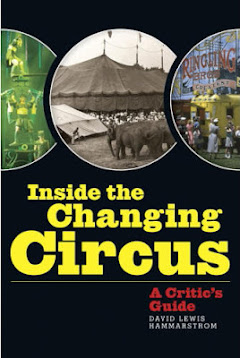
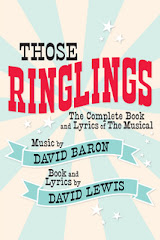

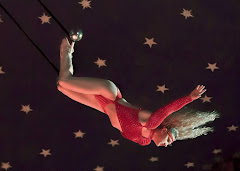




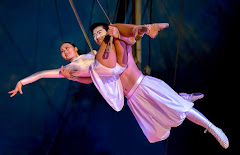

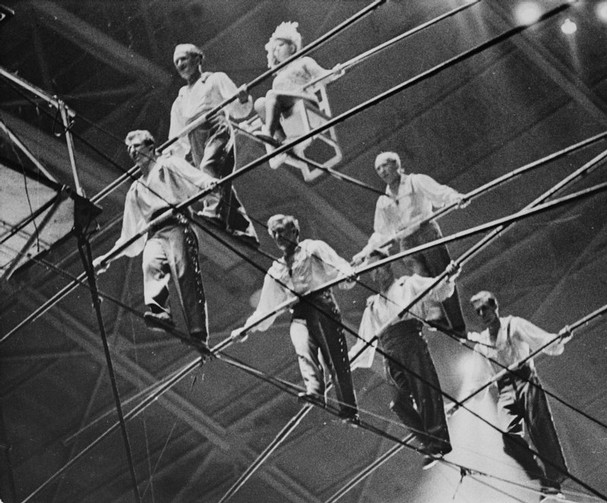
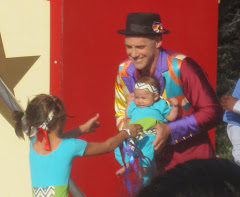
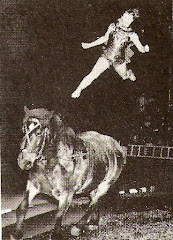
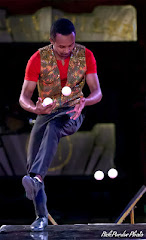



No comments:
Post a Comment